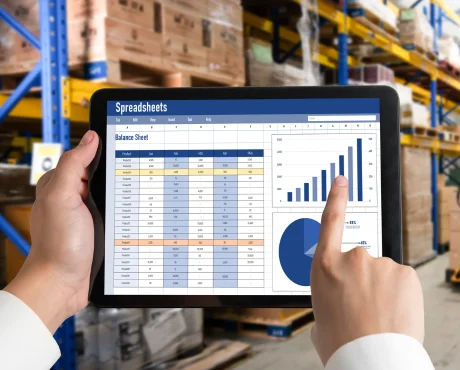Table of Contents
Vendor relationships are the lifeblood of any business operation. When a dispute occurs, it’s not merely about late shipments or missed deadlines. It’s about safeguarding your supply chain, preventing financial losses, and maintaining business without friction.
Procurement leaders and operations managers know that supplier disputes can snowball rapidly, causing operational gridlocks, reputational losses, and even court battles if not resolved quickly. The secret is to tackle these disputes with a well-organized solution plan that prioritizes fairness, compliance, and long-term business continuity.
Whether looking for the most effective methods of conflict resolution for supplier cost dispute resolution without spoiling vendor relationships, these five tactics will enable you to act swiftly and decisively.
5 Ways of Overcoming Supplier Cost Challenges
1. Set Clear Communication

Miscommunication is one of the most common reasons why disputes erupt between vendors. Inconsistent answers, unwritten understandings, and openness to nothing can transform small issues into complete conflicts. Establishing clear communication guidelines means that expectations are aligned, and the likelihood of misunderstandings getting out of hand is minimized.
Begin by specifying how communication will occur-email, vendor portals, or planned meetings. Set expectations for response time to avoid delays. Wherever scope, price, or delivery schedule changes are discussed, document them. Oral agreements tend to be misinterpreted later.
Having a formal framework for documentation, keeping email histories, meeting summaries, and performance reports, presents a concrete point of reference. The documentation habit secures your leverage during negotiations and dissipates arguments with factual precision instead of emotional response.
Secondly, organizations must implement vendor relationship management systems to monitor communication and keep all necessary documents in one location. A centralized system prevents the risk of missing emails or contradictory records, allowing both parties to always refer to the same information.
2. Read the Contract Carefully

Don’t leap into negotiations without revisiting the contract. It contains a guide to conflict resolution, describing each party’s responsibilities, fines, and settlement procedures. Procurement and legal teams often skip this step and use ad-hoc measures, creating further problems.
Review essential clauses that describe:
- Scope of Work: Are the vendor deliverables and performance indicators well-defined?
- Payment Terms: Are there provisions for delays, fines, or adjustments?
- Dispute Resolution Process: Is there a predefined mediation or arbitration clause?
- Termination Rights: What grounds allow for contract termination if the dispute escalates?
The contract should provide an objective benchmark if the dispute revolves around performance issues, payment conflicts, or delivery failures. Organizing critical sections into a summarized table for internal use helps teams reference them quickly during discussions.
If there are gaps or uncertainties in the contract, take this as a chance to improve future contracts. Having contracts be well-defined and clearly outline procedures for supplier cost conflict resolution can go a long way toward preventing problems from arising in the first place.
3. Negotiate in a Fair and Tactical Manner

Vendor disagreements need not be confrontational. A hard, adversarial method tends to prolong resolution and ruin relationships. Instead, try to find areas of agreement and present the problem as a challenge both sides must address together.
Begin with identifying the vendor’s concerns. If a supplier is running late with deliveries,
Is this caused by international supply chain problems, lack of personnel, or fluctuations in pricing? If performance-related, do misalignments of expectations have to be realigned?
Alternative conflict resolution strategies such as mediation, arbitration, or structured negotiation provide non-litigious means to resolve conflicts. Mediation, in particular, is a useful vehicle for negotiating mutually advantageous results without aggravating tensions. If managed effectively, conflicts can result in improved contract terms and greater vendor performance in the future.
Firms should also hold internal assessments to determine if some internal process inefficiencies lead to the conflict. At other times, inefficient management of approvals, invoices, or purchase orders within the organization may fuel vendor disputes, which will require tightening procurement workflows.
4. Call in a Third-Party Mediator If Necessary

Certain disagreements need a third-party opinion. When conversations are circular, or no one is willing to give in, having a third-party mediator step in can speed things up. A skilled mediator familiar with procurement and contract law facilitates a middle ground between the two sides without litigation.
Selecting the appropriate mediator is paramount. Select professionals familiar with your industry, as they can better interpret contract subtleties and industry standards. Adequate preparation before mediation is also essential-compile all pertinent documents, prepare for counterarguments, and establish your desired result.
Dispute resolution techniques like mediation aren’t merely about resolving conflicts—it’s about how future agreements are designed better. If your business keeps running into the same vendor issues, the mediator’s analysis can assist in tightening up your contract and procurement processes to avoid recurring problems.
Firms should also consider enlisting legal advisers when managing supplier cost conflict resolution with high stakes. Though mediation seeks a common solution, legal advisers can advise on likely liabilities, loopholes in the contract, and the viability of enforcing penalty provisions if needed.
5. Document and Track the Supplier Cost Dispute Resolution Process

Conquering the dispute is merely half the task. Without organized follow-through, problems are likely to recur. The terms of resolution-altered delivery schedules, changed pricing models, or new compliance protocols-need to be spelled out in precise detail.
There should be a formal resolution document that specifically lists:
- Mutually acceptable responsibilities on both sides.
- Timelines and milestones for implementation.
- Contingency strategies for potential setbacks.
- Communication protocols to prevent future misinterpretations.
Task an internal team to manage implementation. Schedule regular review meetings to check for adherence to the new terms. If a vendor does not comply with the agreed conditions, pre-specified corrective measures must be implemented immediately.
Aside from documentation, companies should implement vendor performance tracking tools to monitor adherence to newly formed agreements. Such tools may offer automated notifications if a vendor fails to meet deadlines; thus, any agreement violations will be promptly resolved.
Conclusion
Disputes with vendors need not to be protracted or disruptive. With a well-designed conflict resolution process strategy-enforcing clear communication, working with contract specifics, and negotiating in good faith, you can resolve disputes effectively and continue business as usual. The end objective is not merely the resolution of procurement conflict but building vendor relationships that endure and are productive in the long term.
An effectively managed conflict management strategy resolution process can enhance vendor accountability, enhance supply chain resilience, and protect your company’s operational efficiency. If you are facing ongoing vendor disputes and require expert advice on contract management or procurement strategies, consider professional assistance to streamline your strategy and reduce future risks.
Businesses can prevent recurrent conflicts and establish long-term partnerships with suppliers by taking a proactive approach to vendor management, supported by transparent contracts and efficient communication plans. By integrating these five dispute resolution procedures into procurement processes, organizations can improve vendor relationships, minimize risks, and improve operational efficiency.





